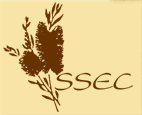Industry Intrudes |
The Noxious Reserve
As a result of the 1848 Act of Parliament banning noxious industries from Sydney proper, these industries were attracted to the areas around Botany Bay with its plentiful water supply. The Noxious Traders Association was formed in the 1870s to control malodorous and polluting activities such as power plants, tanneries, glue works, soap works, wool-scouring mills, lime burning kilns and sewage farms. In 1883, a Royal Commission suggested Kurnell Peninsula as the site for Sydney's noxious trades because of the threat of bubonic plague and the 'disgustingly offensive' odors in the air. The likelihood of such a siting increased when the Como Railway Bridge was opened in 1886 and the railway was extended to Sutherland. That same year, Parliament passed a bill to resume and dedicate 3570 acres of land at Kurnell for noxious trades, waste and a cemetery; and a branch railway line was proposed to link it to the main line at Sutherland.
Cemeteries were then classified as toxic regions because the runoff from the leachate in the soil after rains was believed to cause health problems. Nineteenth century maps show a proposed mortuary railway from Sutherland to the Noxious Reserve at Kurnell. However the opening of Woronora Cemetery on Linden Street in Sutherland in 1893 put an end to that plan. But the noxious trades and waste classification still applied to Kurnell Peninsula. |
| top of page |



